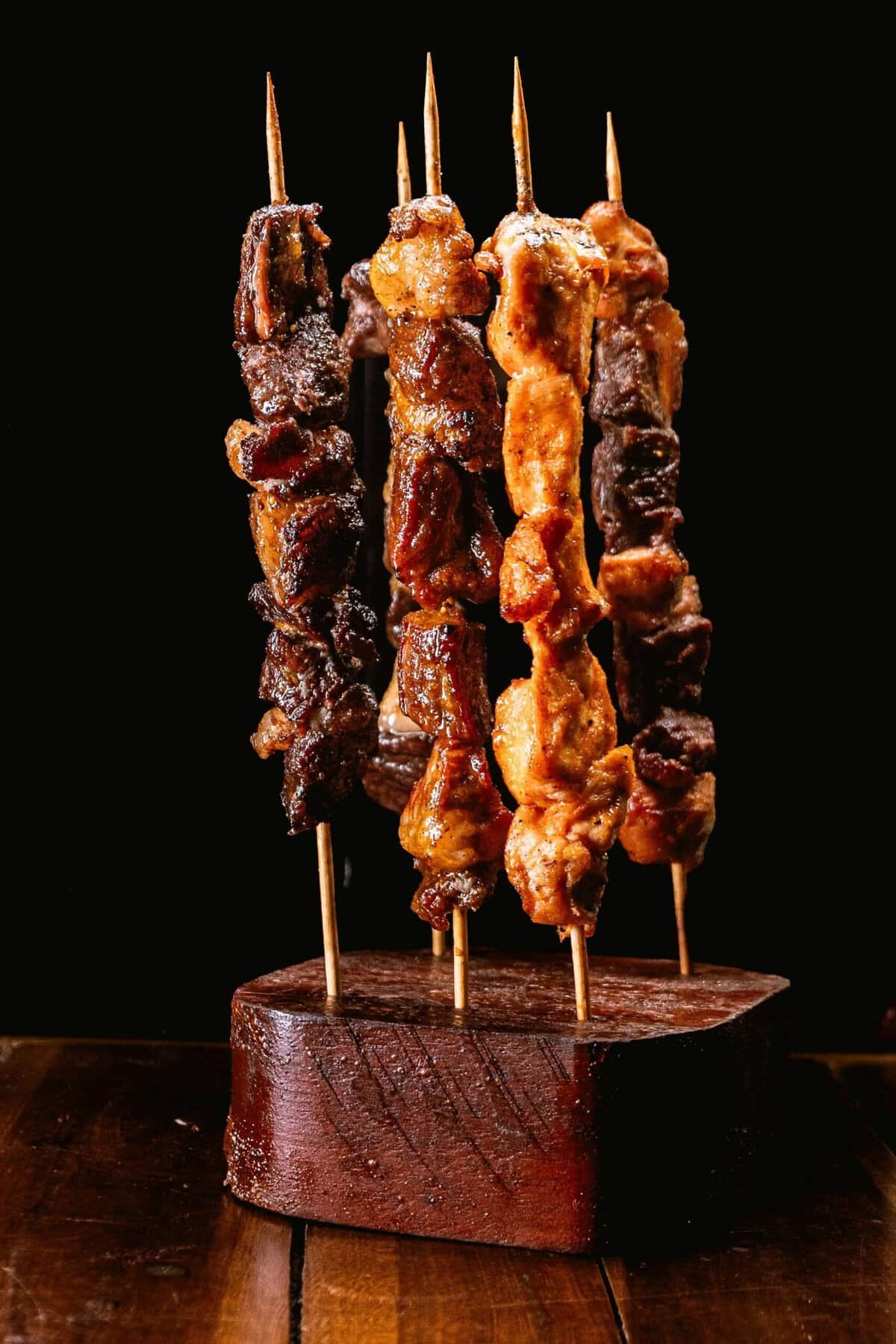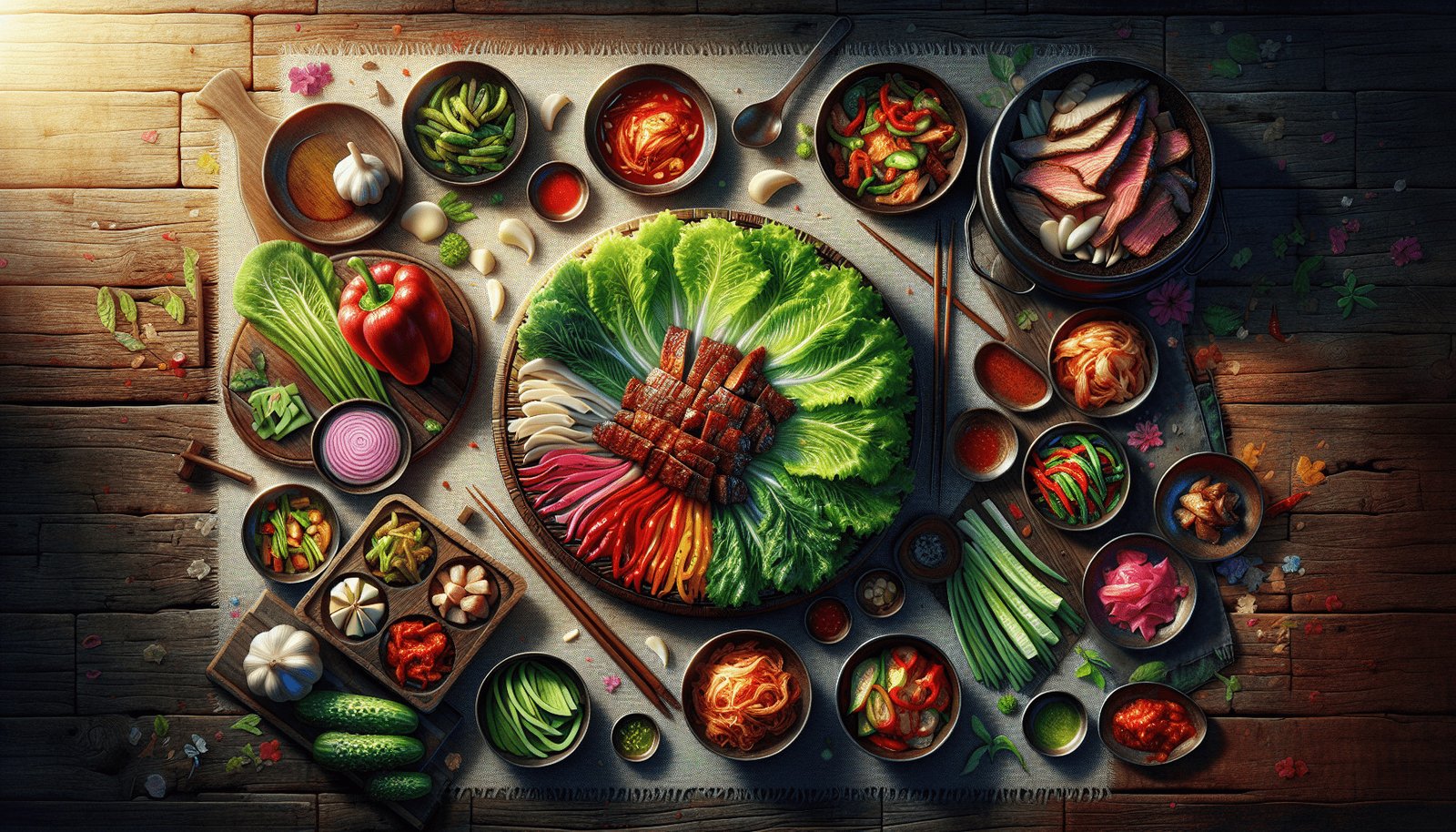Have you ever wondered how a unique concept like “ssam” shapes the way some Korean dishes are savored and enjoyed? If you’re curious about Korean cuisine or simply want to delve into the culinary experience behind “ssam,” you’re in the right place. Let’s explore how this approach transforms eating into an art and a social activity.
Understanding “Ssam”: More Than Just a Meal
What is “Ssam”?
“Ssam,” directly translating to “wrap” in English, is much more than the simple act of wrapping food. It is an embodiment of Korean culture, where meals are not just about the food itself but about the experience, the sharing, and the interaction that comes with it. In ssam, a variety of ingredients such as meats, rice, and condiments are wrapped in leafy greens, often lettuce or perilla leaves, creating a flavor-packed bite.
Historical Roots of Ssam
The origins of ssam are quite ancient, with historical records indicating its presence in Korean culture for centuries. Initially, ssam was a practical approach for people to eat their meals in portable form. Over time, it evolved into a popular culinary tradition. The act of wrapping food in leaves is deeply rooted in Korean rituals and traditional practices, symbolizing protection, unity, and the blending of flavors and textures.
The Social and Cultural Significance of Ssam
A Communal Eating Tradition
Ssam is not just about taste; it engenders a sense of community and togetherness. At the heart of the Korean dining table is an intimate sharing experience, where family and friends gather around a spread of diverse ingredients. Making ssam is a participatory activity, inviting everyone to choose their fillings and create personalized bites.
Celebrations and Special Occasions
In Korean culture, special occasions often involve foods that are shared communally, and ssam is no exception. Its inclusion in festive meals highlights its role in celebrations and significant events. Whether it’s during family reunions, birthdays, or holidays like Chuseok, ssam serves to bring people closer, offering a taste of tradition coupled with the joy of interaction.

The Core Components of Ssam
The Base: Leafy Greens
The leaf is the foundation of ssam, setting the stage for the flavors to come. Lettuce is most commonly used, providing a fresh and crisp texture that perfectly complements the fillings. Perilla leaves offer a unique, slightly minty flavor that can elevate the taste profile of the wrap. Sometimes, cabbage, kale, or seaweed are used as alternatives, each bringing its own unique twist to the ssam experience.
Fillings and Flavors
The beauty of ssam lies in its versatility. A wide array of fillings can be used, bringing diverse tastes and textures to each wrap. Here’s a look at some popular options:
| Ingredient | Description |
|---|---|
| Meats | Grilled pork belly (samgyeopsal), beef (bulgogi), or chicken are traditional choices, often marinated and cooked to perfection. |
| Rice | Sticky rice serves as a neutral base, making each bite hearty and satisfying. |
| Kimchi | The fermented taste of kimchi adds a spicy and tangy kick, enhancing the overall flavor profile. |
| Sauces | Ssamjang (a fermented soybean paste) and gochujang (spicy red pepper paste) are used to add depth and heat. |
| Vegetables | Sliced garlic, green chili peppers, carrots, and bean sprouts lend additional layers of flavor and crunch. |
Complementary Side Dishes
Accompanying side dishes, or banchan, are typically served with ssam to create a well-rounded meal. These can include everything from seasoned spinach to pickled radishes, providing a palate of flavors that complement the heartiness of the wraps.
The Art of Making Ssam: A Step-by-Step Guide
Preparing Ingredients
Begin by grilling your choice of proteins and preparing a spread of vegetables, rice, and sauces. The preparation of ssam is as much about presentation as it is about flavor. Arrange all the ingredients in small dishes around the table, allowing each individual to pick and choose their preferred components.
Crafting the Perfect Bite
The art of crafting a ssam lies in balancing flavors and textures. Start by laying a leafy green flat on your palm. Add a few grains of rice, a piece of meat, a slice of garlic, and a dab of sauce. Top it off with some kimchi or a vegetable of choice. Fold the leaf around the filling completely, creating a neat little package that can be eaten in one bite.
Sharing the Experience
Once you’ve made your ssam, the joy is in sharing it with others. Tradition holds that making a wrap for someone else at the table is a gesture of goodwill and affection, offering them a specially curated bite.

Health Benefits of Ssam
Nutritional Aspects
Ssam offers a wholesome eating experience. The focus on leafy greens means that it is naturally rich in vitamins and fiber. Additionally, the inclusion of fermented foods like kimchi brings probiotics into the diet, promoting gut health. With lean meats and fresh vegetables, ssam provides a balanced intake of protein, carbohydrates, and nutrients.
Aiding Digestion
The combination of raw vegetables and fermented condiments not only adds flavor but also aids in digestion. Enjoying a meal in wrapped form slows the eating process, encouraging mindfulness and social interaction, which can contribute to better digestion.
Modern Twists and Global Influence
Innovative Variations
As Korean cuisine continues to gain popularity worldwide, chefs are putting new spins on traditional ssam. Fusion ssam might include non-traditional ingredients like seafood, international sauces, or wraps made from unconventional items like tortillas or rice papers.
Impact on Global Cuisine
The concept of ssam is being embraced in other culinary traditions. The interactive nature of making wraps has lent itself well to the street food scene and upscale eateries alike, inspiring chefs to innovate and adapt the ssam concept to global tastes.

Conclusion: The Lasting Appeal of Ssam
The allure of ssam goes beyond its delicious taste. It is an experience woven tightly with the social fabric of Korean culture, fostering a sense of togetherness and shared enjoyment. Whether you are at a bustling Korean barbecue restaurant or trying your hand at making ssam at home, the process is a journey of discovery, experimentation, and cultural appreciation. As you wrap each bite, you envelop not just ingredients, but the essence of a long-standing tradition that nourishes the body and soul alike. Embrace the ssam experience; it’s a delightful adventure for the senses and the spirit.
